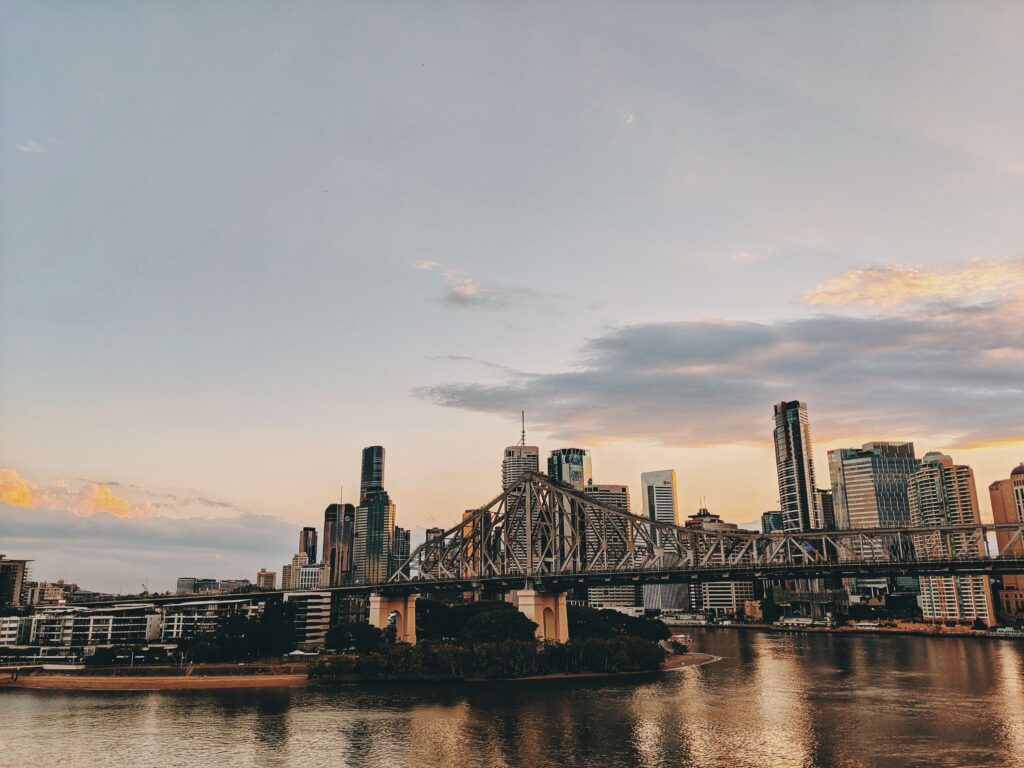Brisbane Weather by Month

Tourism scores favor clear, rainless days conducive to outdoor tourist activities while beach/pool scores provide warm, sunny conditions ideal for swimming and other water-based sports activities.
From February through March, chances of wet days gradually decrease, as sea temperatures generally remain consistent and relatively constant.
Table of Contents
Winter
Brisbane enjoys a tropical wet-dry climate, meaning it experiences large amounts of rainfall but only sometimes. Winter and spring tend to have cool temperatures with clear blue skies; summer can get steamy and humid at times but remains manageable by finding shade or water sources to relieve discomfort.
Autumn and winter are excellent times to visit; temperatures decline and humidity levels decrease, providing ideal conditions for exploring.
Queensland generally experiences cold winter weather, though not as severely as in other regions such as northern Australia. Temperatures can drop into single digits across parts of southern Queensland with Toowoomba, Warrego and Granite Belt regions experiencing some of their driest winters on record since last year.
Spring
Brisbane boasts a unique climate to Sydney in that there is no clear ‘wet season’ or ‘dry season’; instead spring tends to be dry yet comfortably warm, although temperatures can still reach scorching heights during La Nina years. Rainfall typically falls as isolated thunderstorms.
From March to May, temperatures gradually ease off while rainfall steadily decreases – making this an ideal time of year to visit Brisbane since temperatures won’t get too hot or too cold and parkland precincts bloom with vibrant purple jacaranda trees!
Autumn marks the end of Northern Territory’s dry season and is therefore an ideal time for safari trips through Kakadu or Katherine to view ancient Aboriginal rock art galleries or visit Crocosaurus Cove – though towards November the weather becomes somewhat muggier and you might experience more showers than usual.
Summer
Brisbane enjoys a subtropical climate with hot and humid weather all year long. Rainfall is not excessive but rather well distributed; stormy downpours and thunderstorms tend to occur from November to April during what’s known as “wet season.”
At its height of summer from December to February, Brissie can become uncomfortable due to sweltering heat. But thanks to sea breezes, temperatures often cool off at night – the perfect opportunity for viewing its glorious gardens; which come alive with mauve jacarandas, golden silky oaks and red poinciana trees blooming full force during this season.
As UV index levels peak during this season, it’s essential to protect yourself with high-quality sunburn lotion and wear sunglasses and a hat when heading outdoors. Fall and winter tend to be much drier yet still warm enough for swimming and walking; plus these seasons are popular for nature experiences like whale watching.
Autumn
Autumn in Brisbane is an idyllic time. Days are warm and sunny with a cool sea breeze flowing in from the ocean, while parklands bring vibrant autumnal colours of yellow, orange and red into play.
Daytime temperatures in Greater Brisbane were generally close to average overall, although maximum temperatures at some sites exceeded expectations by one degree or so. Nighttime temperatures also exceeded average across Greater Brisbane; some locations even experiencing their warmest autumn nights on record!
Rainfall totals for autumn were well above average, particularly in the southeast region of Ontario. Heavy precipitation occurred between March and April resulting in one area even reporting their highest autumn total ever!
Pack light clothes that include an evening jacket or sweater. Be sure to include insect repellent, as well. If visiting beaches or swimming pools, pack your swimsuit and towel!


